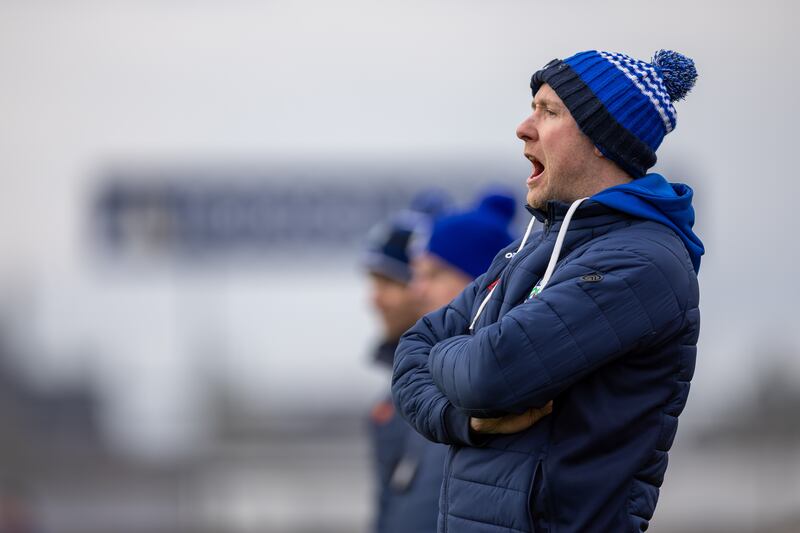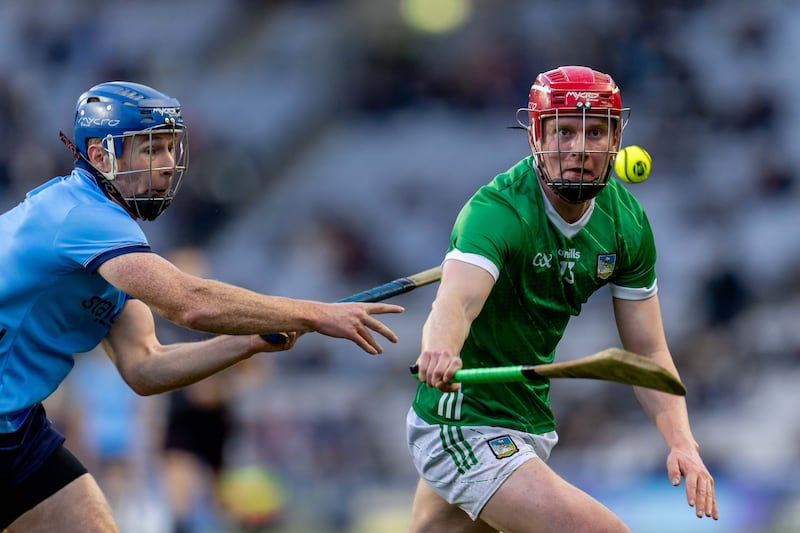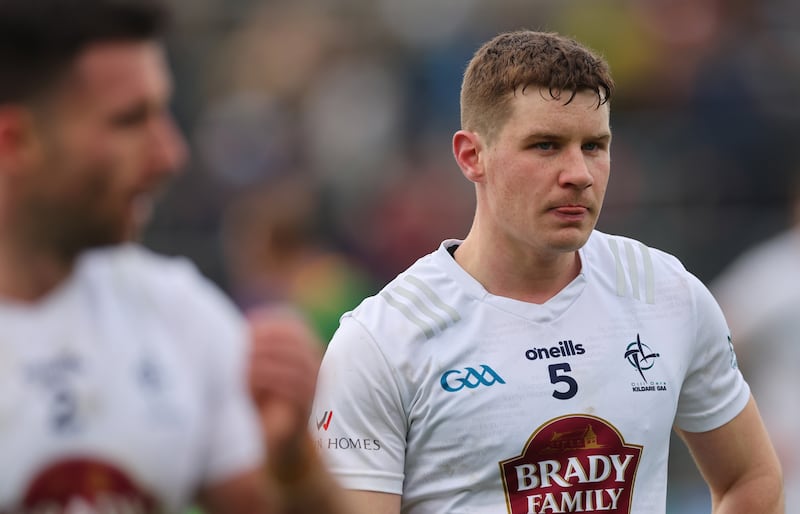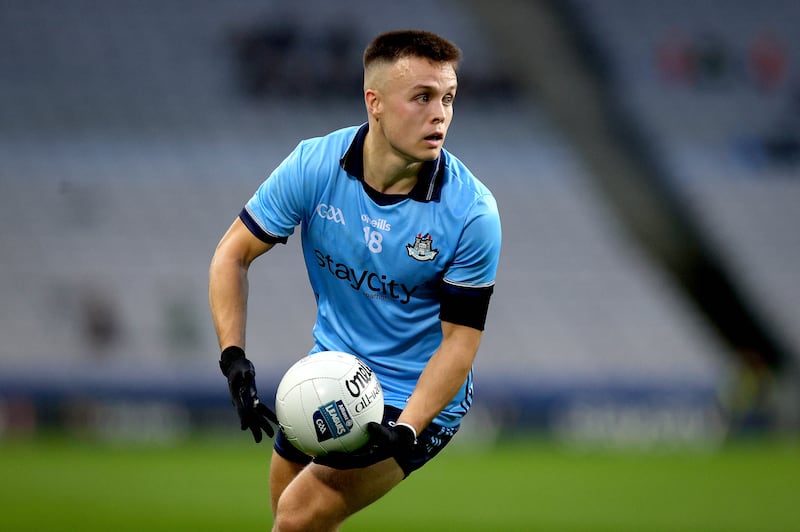Armagh and Donegal’s Division Two stay likely to be short
It is not yet 12 months since Paddy Carr resigned as Donegal manager, his decision to step down midway through the league putting the spotlight on the free fall in which the county found itself. They finished bottom of Division One and were relegated. Armagh joined them in the drop zone. Then in August of last year Jim McGuinness returned to take charge of Donegal and in the same month a possible push against Kieran McGeeney remaining at the helm never materialised in Armagh as he was strongly supported by delegates to stay for a 10th season.
Sunday’s league draw between the counties was not a classic by any stretch of the imagination but it was tactically intriguing. It was a Division One contest in all but name. Despite some turnovers and mistakes, Donegal and Armagh are the most capable and accomplished sides in Division Two – they also have the deepest squad depths and boast marquee forwards. A year might be a long time in football, but it appears Division Two will only be a short-term arrangement for both counties. Gordon Manning
Monaghan’s Division One journey may well come to an end
The second longest stretch of any team in Division One looks to be coming to an end. Monaghan spent the past decade of league football finding new and interesting ways to avoid the drop so you’d be mad to go saying anything definitive just yet about their prospects. But Sunday’s 12-point defeat by Roscommon was their third hiding in a row. Only Waterford have a worse points difference than them across the four divisions.
By itself, that needn’t be fatal of course. In all their various escapes and escapades over the years, Monaghan have only needed points difference to stay up once. That was in 2016, when four teams finished on six points and Cork fell through the trapdoor. Monaghan still have Galway, Tyrone and Mayo to come, with Omagh the only away trip. None of those teams are more than two points ahead of Vinny Corey’s side. They’ve faced sterner mathematical tests than this and stayed standing.
READ MORE

But the Monaghan teams that came through those campaigns were so much more grizzled and settled than this one. Of the team that started against Dublin in last year’s All-Ireland semi-final, only five took the field for the throw-in against the Rossies on Sunday. They had four All Star nominees last year – Karl O’Connell is the only one to have played any significant part in this campaign. Darren Hughes played his first minutes of 2024 on Sunday – there’s still no sign of Conor McManus. Rory Beggan is in America, Kieran Hughes is retired, Conor McCarthy is injured. Their replacements are young and unsure of their footing.
Corey has been adamant all along that the summer is the thing and that the league is a place where he needs to blood new players for the coming years. But they like being in Division One – nobody under the age of 30 in the Monaghan panel has ever played any other type of league football. If they get out of this one alive, it would be their most unlikely Houdini act yet. Malachy Clerkin
Limerick field new blood
The three inside forwards that Limerick fielded on Saturday had never started a match in Croke Park and have yet to start a championship match for Limerick. Between them, Adam English, Shane O’Brien and Donnacha O’Dalaigh contributed 2-10 of Limerick’s total, and half a dozen other shots that went astray. It is hard to think of another county where at least two of them wouldn’t be featuring in this year’s championship. In Limerick, though, the odds are different.
In the five All-Ireland finals that Limerick have won under John Kiely’s leadership the starting positions in Limerick’s forward line have been shared by just eight players. Cathal O’Neill, who was terrific as an experimental centre back on Saturday night, has played less than half an hour in All-Ireland finals, having made his first league appearances as far back as 2021. Presumably he is still next in the queue, ahead of Saturday night’s tyros.

There has been a sense over the last couple of years that Kiely has been trying to generate more competition in his attack and that the young players coming through just haven’t done enough to gain his trust. O’Dalaigh, for example, made seven appearances in last year’s league without playing a minute in the championship; O’Brien looked incredibly sharp in the early rounds of last year’s league too, but his form dipped with the U20s in the spring and he was shuffled back in the queue.
Graeme Mulcahy, who is now in his 16th season, still made six appearances in last year’s championship off the bench. Any chance of a change in the pecking order?
“I just wanted them to get that experience under their tails,” said Kiely of his young inside forwards on Saturday night. “Hopefully it will light the fires for them in training over the next number of weeks.”
No promises, naturally. Denis Walsh
Kildare show some battle but unlikely to win this war
You can’t win with a losing hand. When Kildare turned into the last quarter one point up on Meath, Sunday’s early relegation showdown in division two suitably tight and tense, they were within licking distance of their first points of the season.
Kildare had the momentum too, and better still were showing far more battling qualities than in their previous three league games. The only problem was they failed to score again, three of their starting forwards – Darragh Kirwan, Barry Kelly and the particularly lively Ben McCormack – already replaced through injury.

Meath, roared on by the sizeable home crowd at Pairc Tailteann, hit the last four points without reply and were deserving winners in the end. That keeps them relatively safe from relegation, for now, and as Tailteann Cup champions are safe too in their inclusion in the All-Ireland this summer.
So what now for Kildare? This Sunday’s trip south to face Cork, who secured a crucial win over Fermanagh on Sunday, may well decide their Division Two fate and their summer destiny too. Glenn Ryan will take some heart from those battling qualities on display against Meath, but it seems unlikely they can win the war against relegation.
That means to stay in the All-Ireland this summer they will need to make the Leinster final, even with Dublin on the opposite side of the draw. To stay in Division Two, they’ll likely need to beat Cork and Louth, with Donegal coming in between. There was some evidence on Sunday they’re not going down without a fight. Ian O’Riordan
Murchan flourishes when marking Clifford
You want a job done right, ask a busy man. On Saturday night, Dublin sent Eoin Murchan to mark David Clifford. Mick Fitzsimons is not back yet, Davy Byrne has left the panel, Theo Clancy is four games into his Dublin career. Of the Dublin defence that started against Kerry, only John Small has been around longer than Murchan. Hence, 5ft 8in or no 5ft 8in, the job was his.
And despite giving away six inches in height and well over a stone in weight, Murchan flourished in the role. Clifford ended the night with three points, two from play – exactly mirroring his return in last July’s All-Ireland final. Saturday night was Clifford’s lowest total scored in any league game against Dublin since he made his debut in 2018. Three points from nine shots is a bad night’s work, whatever way you look at it.

Murchan played his part in that. On the couple of occasions Kerry looked to exploit Clifford’s aerial advantage by pumping high balls in, Murchan stayed in the fight long enough to negate the difference in reach. The one ball Clifford dropped short came about because the Dublin defender got the slightest fingertip of a block on it. More usually known for his roadrunner carries in possession, Murchan produced a night of pure, tigrish defending. It’s not the size of the dog in the fight that counts.
That said, it wouldn’t have taken a huge amount for Clifford to have ended with a total closer to Con O’Callaghan’s. He got to see the whites of David O’Hanlon’s eyes three times, twice blazing over the bar and once dragging his shot into the side netting after completely selling O’Hanlon on a pass across goal.
The Hill took immense pleasure in his misses, as they will and as they should. But even the most one-eyed Dub supporter will know that Clifford only needs to tighten the screws a little. Next time they meet, watch out. Malachy Clerkin
- See our new project Common Ground, Evolving Islands: Ireland & Britain
- Sign up for push alerts and have the best news, analysis and comment delivered directly to your phone
- Find The Irish Times on WhatsApp and stay up to date
- Our In The News podcast is now published daily – Find the latest episode here













